 by our College Data Analytics Team
by our College Data Analytics TeamRose - Hulman Institute of Technology total enrollment is approximately 1,990 students. 1,952 are undergraduates and 10 are graduate students.
Male/Female Breakdown of Undergraduates
The full-time Rose - Hulman Institute of Technology undergraduate population is made up of 24% women, and 76% men.
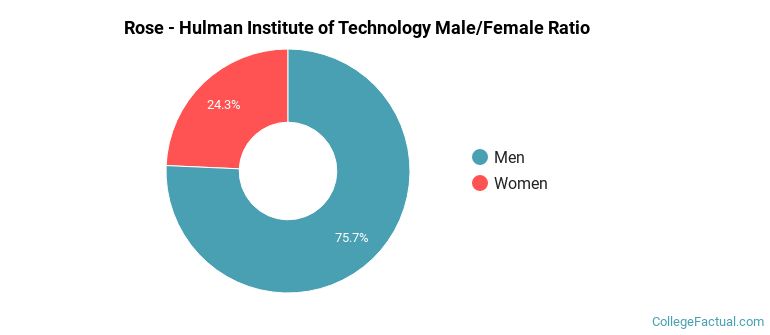
For the gender breakdown for all students, go here.
Rose - Hulman Institute of Technology Racial/Ethnic Breakdown of Undergraduates
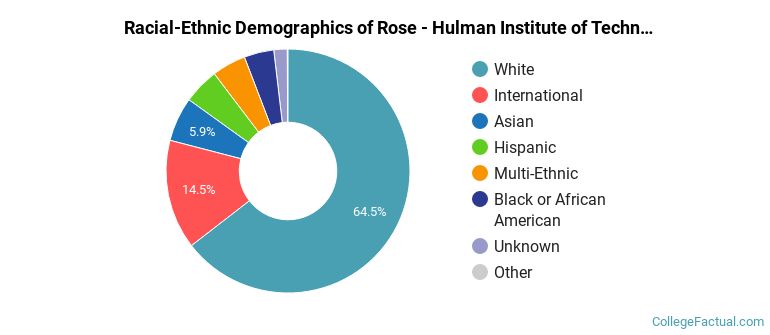
| Race/Ethnicity | Number |
|---|---|
| White | 1,288 |
| International | 223 |
| Asian | 122 |
| Hispanic | 104 |
| Multi-Ethnic | 98 |
| Black or African American | 92 |
| Unknown | 22 |
| Native Hawaiian or Pacific Islander | 0 |
See racial/ethnic breakdown for all students.
Male/Female Breakdown of Graduate Students
About 10% of full-time grad students are women, and 90% men.
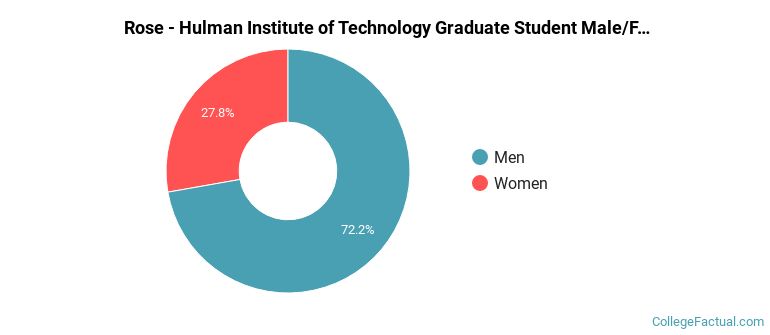
For the gender breakdown for all students, go here.
Rose - Hulman Institute of Technology Racial-Ethnic Breakdown of Graduate Students
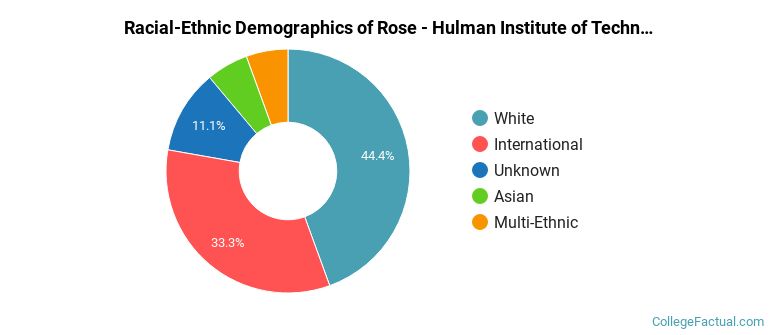
| Race/Ethnicity | Number |
|---|---|
| White | 5 |
| International | 2 |
| Asian | 1 |
| Black or African American | 1 |
| Hispanic | 1 |
| Native Hawaiian or Pacific Islander | 0 |
| Multi-Ethnic | 0 |
| Unknown | 0 |
See racial/ethnic breakdown for all students.
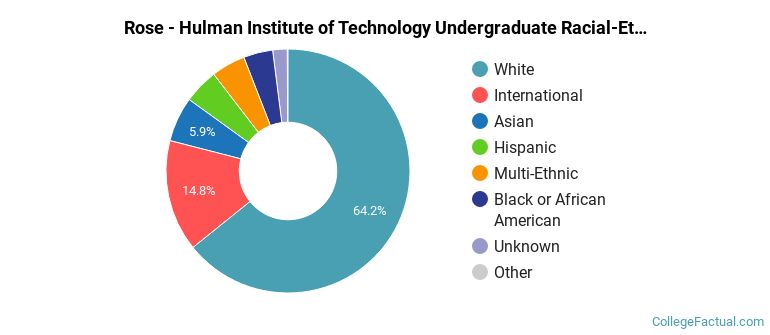
| Race/Ethnicity | Number |
|---|---|
| White | 1,305 |
| International | 230 |
| Asian | 129 |
| Hispanic | 106 |
| Multi-Ethnic | 99 |
| Black or African American | 95 |
| Unknown | 23 |
| Native Hawaiian or Pacific Islander | 0 |
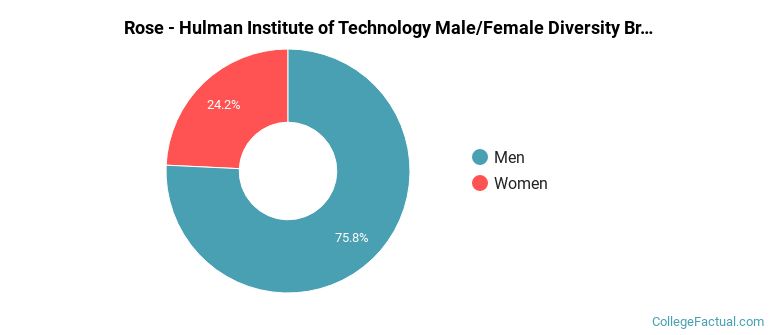
There are approximately 479 female students and 1,511 male students at Rose - Hulman Institute of Technology.
Rose - Hulman Institute of Technology ranks 227 out of 2,183 when it comes to geographic diversity.
66.03% of Rose - Hulman Institute of Technology students come from out of state, and 12.71% come from out of the country.
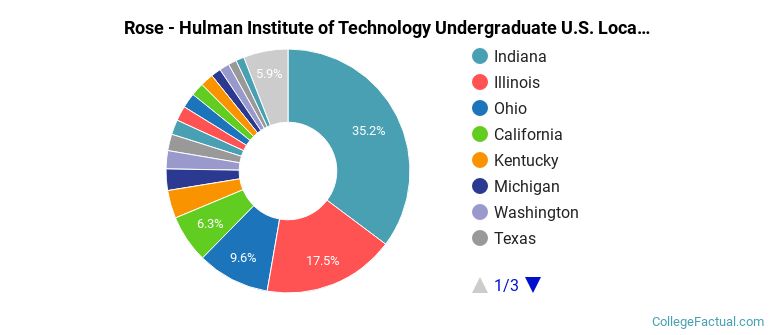
The undergraduate student body is split among 30 states (may include Washington D.C.). Click on the map for more detail.
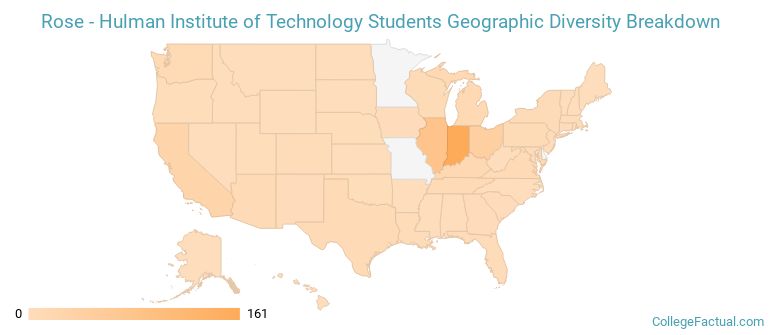
| State | Amount |
|---|---|
| Indiana | 161 |
| Illinois | 80 |
| Ohio | 44 |
| California | 29 |
| Kentucky | 17 |
Students from 19 countries are represented at this school, with the majority of the international students coming from China, India, and South Korea.
Learn more about international students at Rose - Hulman Institute of Technology.
A traditional college student is defined as being between the ages of 18-21. At Rose - Hulman Institute of Technology, 86.41% of students fall into that category, compared to the national average of 60%.
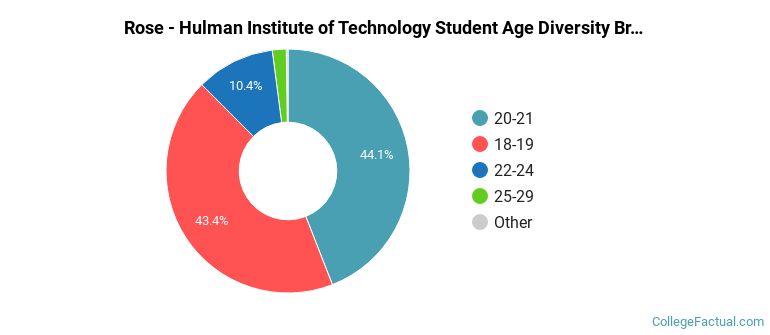
| Student Age Group | Amount |
|---|---|
| 20-21 | 977 |
| 18-19 | 963 |
| 22-24 | 231 |
| 25-29 | 41 |
| 35 and over | 3 |
| 30-34 | 2 |
| Under 18 | 0 |
Footnotes
*The racial-ethnic minorities count is calculated by taking the total number of students and subtracting white students, international students, and students whose race/ethnicity was unknown. This number is then divided by the total number of students at the school to obtain the racial-ethnic minorities percentage.
References